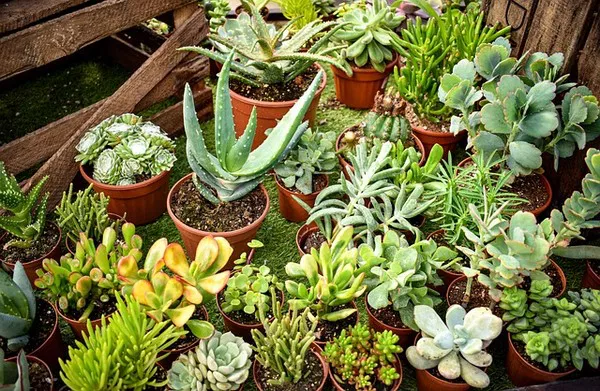Succulents have captured the hearts of plant enthusiasts worldwide with their striking beauty and low-maintenance care. However, for cat owners, it is essential to be aware that some succulents can be toxic to our feline friends. As much as we adore our curious and playful cats, their natural tendency to explore and nibble on plants poses potential risks. In this comprehensive guide, we will explore the succulents that are toxic to cats, providing cat owners with expert advice and insights to create a cat-friendly and safe environment for their beloved companions. Let’s delve into this knowledge-sharing journey and prioritize the well-being of both our cats and our cherished succulents.
Understanding the Dangers of Toxic Succulents
Before we delve into the specific succulents that pose a risk to cats, it’s crucial to understand the dangers of toxic plants. When cats ingest parts of toxic succulents, they may experience a range of symptoms, including gastrointestinal upset, vomiting, diarrhea, lethargy, and in severe cases, even organ damage. Certain succulents contain compounds that can be harmful or irritating to cats, making it essential to identify and remove these plants from your home or garden to safeguard your feline companions.
Identifying Common Toxic Succulents
1. Aloe Vera (Aloe barbadensis miller):
While aloe vera is prized for its soothing properties for humans, it can be toxic to cats. The gel within the aloe vera leaves contains compounds that can cause gastrointestinal issues and potential skin irritation in felines.
2. Jade Plant (Crassula ovata):
Also known as the money plant or friendship tree, the jade plant is a popular succulent. However, its leaves contain toxic substances that, when ingested, can lead to vomiting, lethargy, and even depression in cats.
3. Kalanchoe (Kalanchoe spp.):
With its vibrant and colorful flowers, kalanchoe may attract the curiosity of cats. Unfortunately, the leaves and flowers of this succulent contain toxic cardiac glycosides, which can be harmful to both cats and other pets.
4. Euphorbia (Euphorbia spp.):
Many species of euphorbia, including the crown of thorns (Euphorbia milii), contain a milky latex sap that is irritating and potentially toxic to cats if ingested or comes into contact with their skin.
Creating a Cat-Friendly Environment
The safety and well-being of our feline friends are paramount, and creating a cat-friendly environment can help prevent accidental toxic plant ingestion. Here are some practical tips:
Research Succulents Before Purchasing: Before adding a new succulent to your collection, research its toxicity status to ensure it is safe for your curious feline companion.
Display Succulents Out of Reach: Place toxic succulents in areas that are inaccessible to your cat, such as high shelves or hanging planters.
Provide Cat Grass: To satisfy your cat’s natural urge to nibble on plants, offer cat grass (e.g., wheatgrass) as a safe alternative.
Supervise Outdoor Time: If your cat enjoys spending time outdoors, ensure your garden is free from toxic plants. Create a designated cat-safe area where your furry friend can roam without risk.
Educate Family Members and Guests: Educate everyone in your household and visitors about the potential dangers of toxic succulents, and encourage them to be vigilant in keeping plants out of reach of your cat.
Recognizing and Responding to Potential Toxic Plant Exposure
Despite your best efforts, accidents can happen. If you suspect your cat has ingested a toxic succulent or any other poisonous plant, watch for symptoms such as vomiting, diarrhea, lethargy, excessive drooling, or changes in behavior. In such cases, it is essential to take immediate action:
Remove Access to the Plant: If you catch your cat in the act of nibbling on a toxic succulent, carefully remove the plant from their reach.
Contact Your Veterinarian: Contact your veterinarian or an emergency animal hospital immediately to seek professional advice. Be prepared to provide information about the plant ingested and any observed symptoms.
Avoid Home Remedies: Refrain from administering home remedies, as some may worsen the situation. Allow a veterinary professional to guide you on the appropriate course of action.
Cat-Safe Succulents for Pet-Friendly Homes
To ensure a harmonious coexistence between your cat and your love for succulents, consider incorporating cat-safe succulents into your collection. Some non-toxic succulents that are generally safe for cats include:
Haworthia (Haworthia spp.): Haworthias are charming, small succulents with diverse leaf patterns that are non-toxic to cats.
Christmas Cactus (Schlumbergera spp.): The Christmas cactus, known for its lovely blooms, is safe for cats and makes a festive addition to your home.
Burro’s Tail (Sedum morganianum): With its trailing stems and delicate leaves, the burro’s tail is a safe and visually appealing succulent for pet-friendly environments.
Conclusion:
Safeguarding the well-being of our beloved cats should always be a top priority. By understanding which succulents are toxic to cats and taking proactive steps to create a cat-friendly environment, we can ensure our feline friends enjoy a safe and enriching life alongside our cherished succulents. Always research the plants in your home, supervise your cat’s outdoor activities, and be prepared to take immediate action if an accidental ingestion occurs. By making informed choices and prioritizing the health of our pets, we can cultivate a loving and safe environment where our cats and succulents can thrive together harmoniously.


